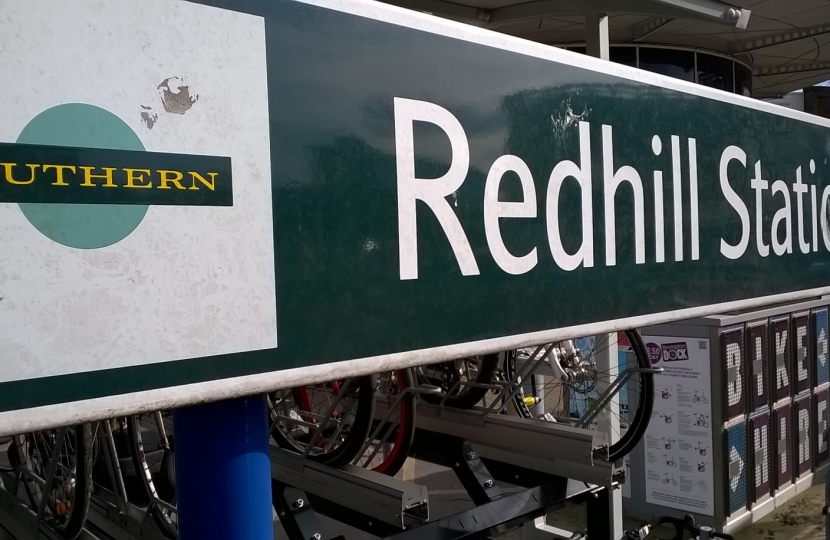
Crispin Blunt MP hosted a meeting with key local stakeholders including representatives of Reigate and Banstead Borough Council, Surrey County Council, Coast to Capital Local Enterprise Partnership and local business organisations at Reigate Town Hall on Friday 21st October to discuss a united response to Govia Thameslink Railway’s Draft 2018 Timetable Consultation.
Mr Blunt reminded those present of the vital importance of rail transport for both residents commuting to London and other destinations and for local businesses relying on employees travelling in to the area by train to work in local businesses. Crispin Blunt said:
“The strength of the local economy is at stake if a fit-for-purpose local rail timetable and service is not implemented post-2018. House prices around the Brighton line are already being affected by the unreliable rail service, and local residents and businesses have threatened to move out of the area if the rail service does not improve.
“Whilst the situation has been exacerbated by recent industrial action and strikes, the underlying service is currently unacceptably poor and responding to the GTR 2018 draft timetable consultation is an opportunity for all local stakeholders to present a united response to influence future improvements in the service.”
Stephen Trigg, Chair of Reigate and Redhill District Rail Users Association (RRDRUA) provided information and data about the recent deteriorating history of rail services to and from Redhill (and local Brighton line stations) and Reigate, explained the proposal GTR have laid out in the draft 2018 timetable affecting the area and suggested that key areas will need to be contested in order to influence improvement decisions.
RRDUA has already met with GTR to discuss the draft timetable and it is clear that there is scope for ideas and suggestions to be considered for key parts of the timetable that need improving, informed by responses to the consultation.
The key issues outlined in the proposed draft timetable that need addressing are:
i) The absence of regular direct rail services through Redhill to Brighton and the south coast, which existed prior to 2014
ii) The lack of sufficient direct and connecting services to and from Reigate from and to London stations, considering the size of the station in terms of rail users, many of whom currently drive to Redhill.
iii) The absence of fast peak-time trains to London Bridge and Victoria. All proposed peak services are slow stopping trains taking around 40 minutes. Eight trains per hour to London are required to meet passenger demand, not six.
iv) The absence of peak time services from Earlswood and Salfords to Victoria.
In addition to this, it was agreed that a truly efficient and reliable service from Reigate and Redhill area stations to London, after 2018, is not ultimately possible without key infrastructure improvements. These can be classified into three projects:
i) The building and tracking of a new platform at Reigate Station that can take 12 car Thameslink trains. Reigate could then be used as a terminus station for Thameslink direct trains to and from London and the north of the capital
ii) The building of a northbound flyover at Stokes Nest (between Coulsdon South and Purley) to allow trains travelling to London on the Redhill line to cross over onto the fast track to improve journey times and reduce delays due to track congestion
iii) The re-tracking and pointing of the area immediately to the south of Redhill Station, which currently causes major delays due to trains crossing outdated track crossovers and severe speed restrictions. This would also enable more efficient usage of platforms at Redhill Station and reduce train in-out times.
The group will be drawing up a joint response to the GTR Timetable Consultation, which closes on 8 December, and will be inviting the public to write to GTR to support this.
It will also be looking at ways to influence future rail infrastructure investment decisions to prioritise those needed to improve local services.
 1920x320_itok-NfHKlbJW.jpg)